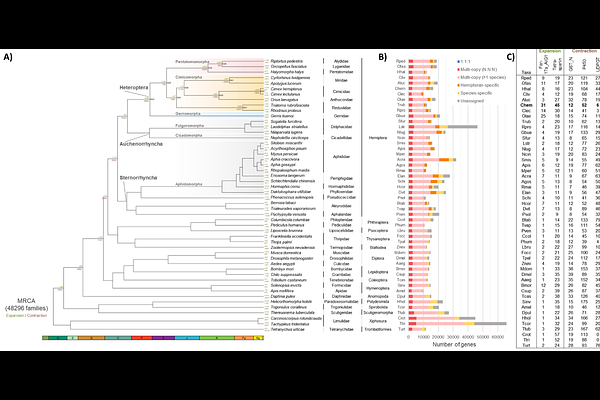Genome of tropical bed bug Cimex hemipterus (Cimicidae, Hemiptera) reveals tetraspanin expanded in bed bug ancestor

Genome of tropical bed bug Cimex hemipterus (Cimicidae, Hemiptera) reveals tetraspanin expanded in bed bug ancestor
Law, S. T. S.; Nong, W.; Li, C.; Chong, T. K.; Yip, H. Y.; Swale, T.; Chiu, S. W.; Chung, R. Y.-N.; Lam, H.-M.; Wong, S. Y. S.; Wong, H.; Hui, J. H. L.
AbstractCimex species are ectoparasites that exclusively feed on warm-blooded animals such as birds and mammals. Three cimicid species are known to be persistent pests for humans, including the tropical bed bug C. hemipterus, common bed bug C. lectularius, and Eastern bat bug Leptocimex boueti. To date, genomic information is restricted to the common bed bug C. lectularius, which limits understand their biology and to provide controls of bed bug infestations. Here, a chromosomal-level genome assembly of C. hemipterus (495 Mb) containing on 16 pseudochromosomes (scaffold N50 = 34 Mb), together with 9 messenger RNA and small RNA transcriptomes were obtained. Comparison between hemipteran genomes, we found that the tetraspanin superfamily were expanded in the Cimex ancestor. This study provides the first genome assembly for the tropical bed bug C. hemipterus, and offers an unprecedented opportunity to address to questions relating to bed bug infestations, as well as genomic evolution to hemipterans more widely.